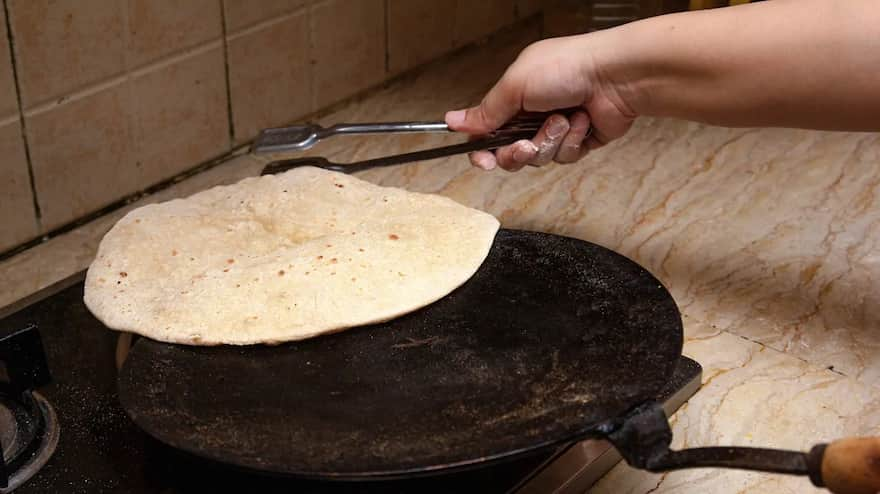Chapatis are a staple in most parts of India. Round, light, soft and fluffy, this popular Indian whole wheat bread is paired with a number of curries, sabzis and dals, and is also known to be a nutritious addition to our meals. Made with dry flour, water and oil, the dough is first kneaded to a smooth pack which is then divided into small rounds, flattened to perfection with a rolling pin and cooked on an iron griddle. Some also smear it with dollops of desi ghee before serving with a range of vegetarian and non-vegetarian delights.
Making the perfect chapati is no less than an art. Right from achieving a certain thickness to knowing how much to toast the roti for it to be cooked just enough, is something that requires practice. But what is perhaps more important and basic is the dough. Since many Indian homes consume chapati twice a day, the dough is prepared in bulk so it can be used for long. The quantity of the dough is often kneaded so that it can last for two days since it is a tedious task to knead it fresh for every meal. But what we need to keep in mind is that the dough remains fresh for the 24 hours. It tends to turn stale when it starts to look greyish-black. This can not only waste all your efforts but also yield rotis that may also tase bad. But we’ve got your back on how to keep that dough fresh for long.

How To Keep Chapati Dough Fresh For Longer
1. Using Cling-Film or Aluminium Foil
After you're done kneading and using the dough, cover it with aluminium foil or a clean cling film before storing it in a container and refrigerating it. Make sure to cover the dough completely so there are no air bubbles left inside.
2. Air-Tight Container
Store your dough in a zip lock bag or an air-tight container as well before placing it in the fridge, it prevents spoiling.
3. Use Less Water
Too much water while kneading the dough can make it spoil faster. Make sure you add water in small quantities and balance the consistency by adding dry flour.
4. Use Oil/Ghee On The Surface
Covering the dough with a layer of oil or ghee before placing it your storage container, right before refrigeration is also a good way to keep it from spoiling. The greasy layer may prevent blackening and drying of the atta.


